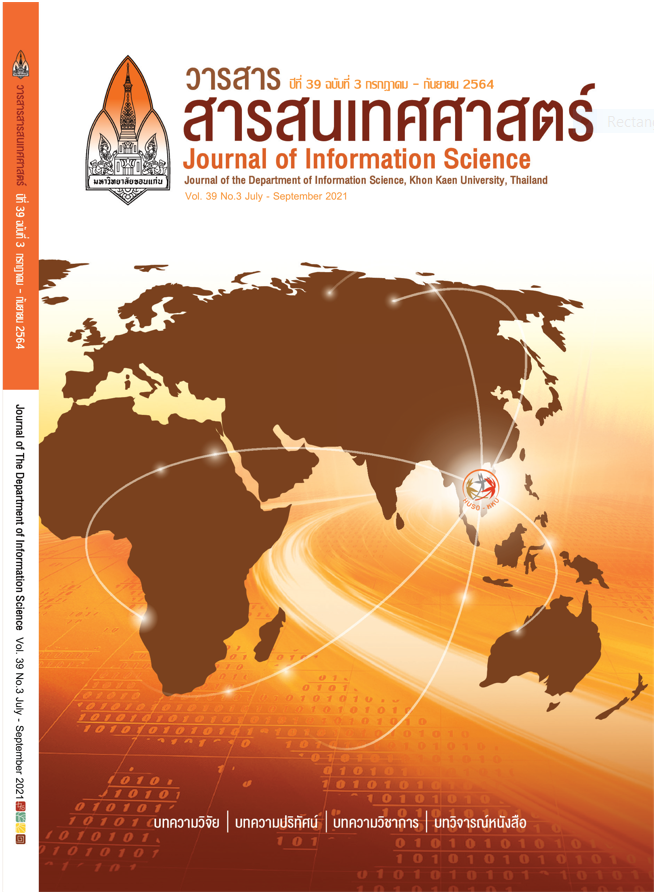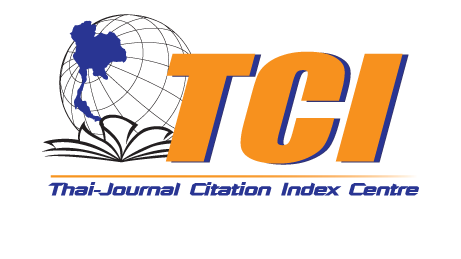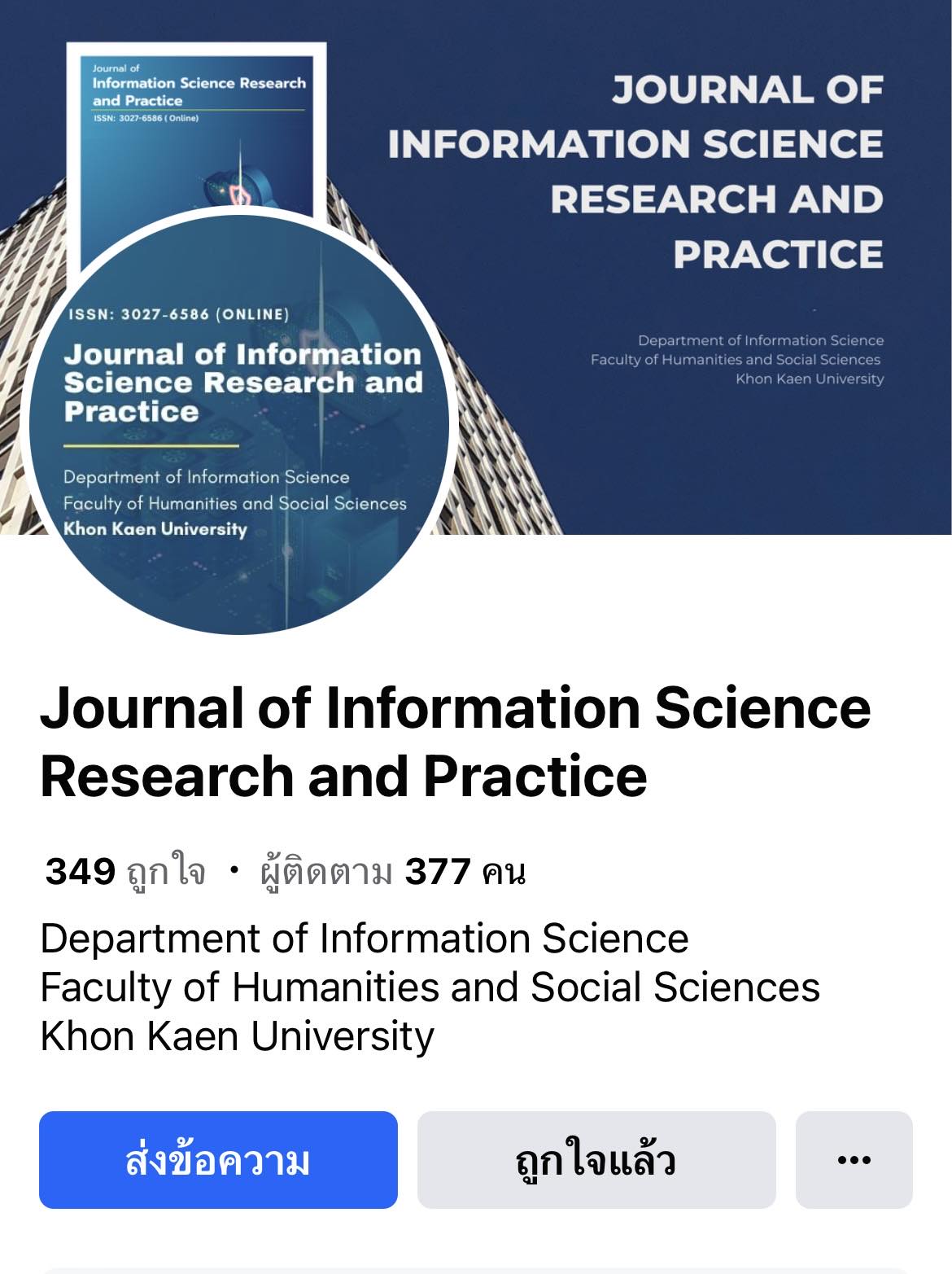Grouping of Land Use Data-based Mapping Clusters’ Techniques in The Case of Muang Nakhonratchasima District, Thailand
DOI:
https://doi.org/10.14456/jiskku.2021.19Keywords:
Land use, Spatial clustering analysis, Technique of cluster and outlier analysis, Technique of hot spot analysisAbstract
Purpose of the study: The objective of this study is to group statistical significantly the land using grouping technique for mapping cluster technique in Muang Nakhonratchasima District.
Methodology: The investigation focuses on the land use grouping using two techniques for cluster mapping in ArcMap program: 1) Cluster and Outlier Analysis (Anselin Local Moran’s) and 2) hot spot analysis (Getis-Ord-Gi)
Main findings: The findings reveal that the cluster analysis is appropriate for grouping urban and housing areas while the outlier analysis is good for agricultural and dwelling ground. Only contiguity edges and corners with Euclidian distance are recommended for clustering since it can group as many large areas as possible. Furthermore, hot spot analysis is suitable at various confidence levels for examining urban and dwelling areas and agricultural lands. Inverse distance (square)-based Euclidian and Manhattan distance is suggested for hot spot clustering at high confidence level because it can group as many areas as possible at the greatest confidence level too.
Applications of the study: Findings of this study can be utilized for the spatio-temporal analysis and land use planning of the city of Nakhornratchasima to enable the land use operation more systematically and at the maximum benefit to the public.
Downloads
References
Barthel, M., Fava, J. A., Harnanan, C. A. Strothmann, P., Khan, S. & Miller, S. (2015). Hotspots analysis: providing the focus for action. In G. Sonnemann & M. Margni (Eds.), Life Cycle Management (149-167). Retrieved from https://link.springer.com/content/pdf/10.1007%2F978-94-017-7221-1.pdf
Carlier, J., Doyle, M., Finn, J.A., Uallachain, D.O. & Moran, J. (2021). A landscape classification map of Ireland and its potential use in national land use monitoring. Journal of Environmental Management, 289, 112498.
ESRI. (2018a). Cluster and outlier analysis (Anselin local moran's i). Retrieved from https://desktop.arcgis.com/en/arcmap/10.3/tools/spatial-statistics-toolbox/cluster-and-outlier-analysis-anselin-local-moran-s.htm
ESRI, (2018b). Hot spot analysis (Getis-Ord Gi*). Retrieved from https://desktop.arcgis.com/en/arcmap/10.3/tools/spatial-statistics-toolbox/hot-spot-analysis.htm
ESRI. (2020). How hot spot analysis (Getis-Ord Gi*) works. Retrieved from https://pro.arcgis.com/en/pro-app/latest/tool-reference/spatial-statistics/h-how-hot-spot-analysis-getis-ord-gi-spatial-stati.htm
Food and Agriculture Organization of the United Nations. (1992). The future of our land. Retrieved from http://www.fao.org/3/x3810e/x3810e00.htm#TopOfPage
Jacquez, G. M. (2008). Spatial clustering analysis. Retrieved from https://www.biomedware.com/files/jacquez_ch22_preprint.pdf
Kowe, P., Mutanga, O., Odindi, J. & Dube, T. (2020). A quantitative framework for analysing long term spatial clustering and vegetation fragmentation in an urban landscape using multi-temporal landsat data. International Journal of Applied Earth Observation and Geoinformation, 88.
Land Development Department. (2019). Land use in Thailand 2017-2018. (In Thai). Retrieved from http://www1.ldd.go.th/web_OLP/result/luse_result60-61.htm
Mitra, S. (2009). Spatial autocorrelation and bayesian spatial statistical method for analyzing intersections prone to injury crashes. Transportation Research Record, 2136, 92-100.
Obi Reddy, G. P. (2018). Geospatial technologies in land resources mapping, monitoiring, and management. Retrieved from https://doi.org/10.1007/978-3-319-78711-4_1
Office of the National Economic and Social Development Council. (2020). 20 year national strategy (2018-2037). (In Thai). Retrieved from https://www.moac.go.th/pyp-dwl-files-402791791893#:~:text=The%20National%20Strategy%20(2018%2D2037,developed%20pursuant%20to%20the%20Constitution.&text=Therefore%2C%20Thailand%20needs%20a%20comprehensive,towards%20security%2C%20prosperity%20and%20sustainability.
Oregon State University. (2016). Identifying clusters of clear-cuts and partial harvests using moran’s i and hot spot analysis. Retrieved from https://blogs.oregonstate.edu/geo599spatialstatistics/2016/06/08/identifying-clusters-clear-cuts-partial-harvests-using-morans-hotspot-analysis/
Sanchez-Martin, J.-M., Rengifo-Gallego, J.-I. & Blas-Morato, R. (2019). Hot spot analysis versus cluster and outlier analysis: an enquiry into the grouping of rural accommodation in extremadura (Spain). International Journal of Geo-Information, 8(4), 176.
Smith, J. (2011). Creating land-use scenarios by cluster analysis for regional land-use and transportation sketch planning. Retrieved from https://www.bts.gov/archive/publications/journal_of_transportation_and_statistics/volume_04_number_01/paper_03/index
Susilo, ,B. (2016). Map analysis and spatial statistic: assessment of spatial variability of agriculture land conversion at urban fringe area of Yogyakarta. Retrieved from https://iopscience.iop.org/article/10.1088/1755-1315/47/1/012001/pdf
Verburg, P. H., Crossman, N., Ellis, E. C., Heinimann A., Hostert, P., Mertz, O., Nagendra, H., Sikor, T., Erb, K.-H., Golubiewski, N., Grau, R., Grove, M., Konate, S., Meyfroidt, P., Parker, D. C., Chowdhury, R. R., Shibata, H., Thomson, A. & L. Zhen. (2015). Land system science and sustainable development of the earth system: A global land project perspective. Anthropocene, 12, 29-41.
Verburg,P. H., Erb, K.-H., Mertz, O. & Espindola,G. (2013). Land system science: between global challenges and local realities. Current Opinion in Environmental Sustainability, 5, 433-437.
Victoria Transport Policy Institute. (2019). Land use density and clustering. Retrieved from https://www.vtpi.org/tdm/tdm81.htm
WHO. (2016). Urban green spaces and health – a review of evidence. Retrieved from https://www.euro.who.int/en/health-topics/environment-and-health/urban-health/publications/2016/urban-green-spaces-and-health-a-review-of-evidence-2016
WHO. (2017). Urban green space interventions and health: A review of impacts and effectiveness. Retrieved from https://www.euro.who.int/en/health-topics/environment-and-health/urban-health/publications/2017/urban-green-space-interventions-and-health-a-review-of-impacts-and-effectiveness.-full-report-2017
Zhang, C.. Luo, L., Xu, W. & Ledwith, V. (2008). Use of local moran's I and GIS to identify pollution hotspots of Pb in urban soils of Galway, Ireland. Science of The Total Environment, 398(1-3), 212-221.
Zhang, Z., Ming, Y. & Song, G. (2019). Identify road clusters with high-frequency crashes using spatial data mining approach. Applied Sciences, 9, 5282.
Zhang,T. & Lin, G. (2016). On Moran’s I coefficient under heterogeneity. Computer Statistics & Data Analysis, 95, 83-94.








